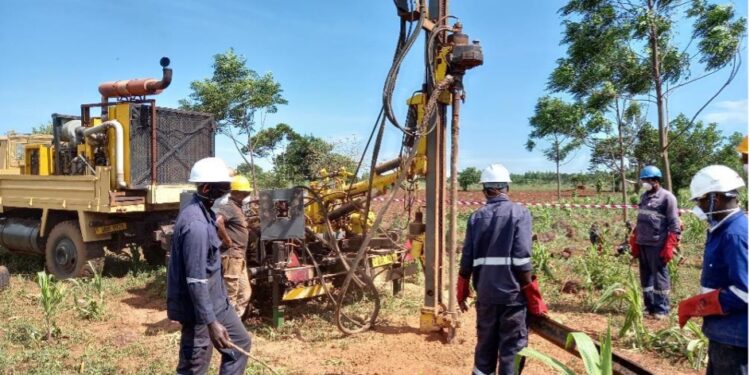Ionic Rare Earths Limited (ASX: IXR) has received positive assays for Tranche 2 of the 8,220 metre Phase 4 drill programme completed in October at the Makuutu Rare Earths Project in Uganda.
Makuutu is defining itself as a large scale, ionic adsorption clay (IAC) hosted rare earth element (REE) project, with extension potential identified east and to the northwest. The Project is well supported by existing infrastructure and is one of less than a handful of confirmed IAC deposits identified globally.
Drill assay results have been received for the Tranche 2 submission consisting of 60 drill holes, including RRMDD326 and RRMDD331 to 389. All holes were drilled to infill the current Makuutu Central Zone East Mineral Resource Estimate (MRE) area on a 200-metre spacing, aimed at increasing grade estimation confidence from Inferred to Indicated resource classification. Additionally, a number of holes were included to assist in converting the Makuutu Central Eastern Zone (CEZ) Exploration Target to a classified resource. Furthermore, new holes have been added around the perimeter of the previously announced MRE (ASX: 3 March 2021) which has the potential for a minor increase in the total size of the resource across this area.
Sample backlogs remain significant at the assay laboratory, with a further three sample tranches currently at the Perth laboratory, and a final (sixth) tranche currently in transit to Australia.
All 60 holes reported in this announcement have delivered clay and saprolite mineralisation intersections above the cut-off grade of 200 ppm Total Rare Earth Oxide less CeO2 (TREO-CeO2), consistent with the initial drilling phases (2019 and H1 2020) and the current MRE.
Notable thick, high-grade and near surface intervals reported from the tranche two assay results include:
- RRMDD373 21.0 metres at 1,040 ppm TREO from 3.7 metres
- RRMDD381 17.2 metres at 1,021 ppm TREO from 4.3 metres
- RRMDD340 13.9 metres at 1,043 ppm TREO from 2.8 metres
- RRMDD363 16.4 metres at 960 ppm TREO from 3.3 metres
- RRMDD360 12.3 metres at 1,054 ppm TREO from 7.3 metres
- RRMDD335 10.3 metres at 1,078 ppm TREO from 2.3 metres
- RRMDD386 15.0 metres at 1,156 ppm TREO from 2.1 metres
- RRMDD385 25.3 metres at 815 ppm TREO from 4.6 metres
- RRMDD362 24.0 metres at 779 ppm TREO from 2.4 metres
“The primary objective of the Phase 4 infill drill program was to increase the confidence on the MRE at Makuutu to support a longer life mine plan for the Feasibility Study,” Managing Director, Tim Harrison, said.
“Pleasingly, the higher grades and thickness we have observed in the infill drilling, and also in the areas that sit outside the current MRE, infer that we will also see a potential increase in the total quantum of resource at Makuutu.”
“The thicknesses of the clay zones under shallow cover further differentiates Makuutu as a truly unique asset – a proven ionic adsorption clay of scale rapidly advancing towards development.”
“We await the remaining assays, however due to the delays we are experiencing, it will likely be the second quarter of 2022 before an updated Mineral Resource Estimate is released. . The Company is exploring options to expedite the receipt of the remaining tranche of assays into Australia and the results from remaining assays.”
“The scale of resource potential emerging at Makuutu further validates the company’s plans to examine a greater role in the rare earth supply chain for the future, underpinned by a long-life potential supply of critical and heavy rare earths at Makuutu.”
For further information please visit: https://ionicre.com.au/












